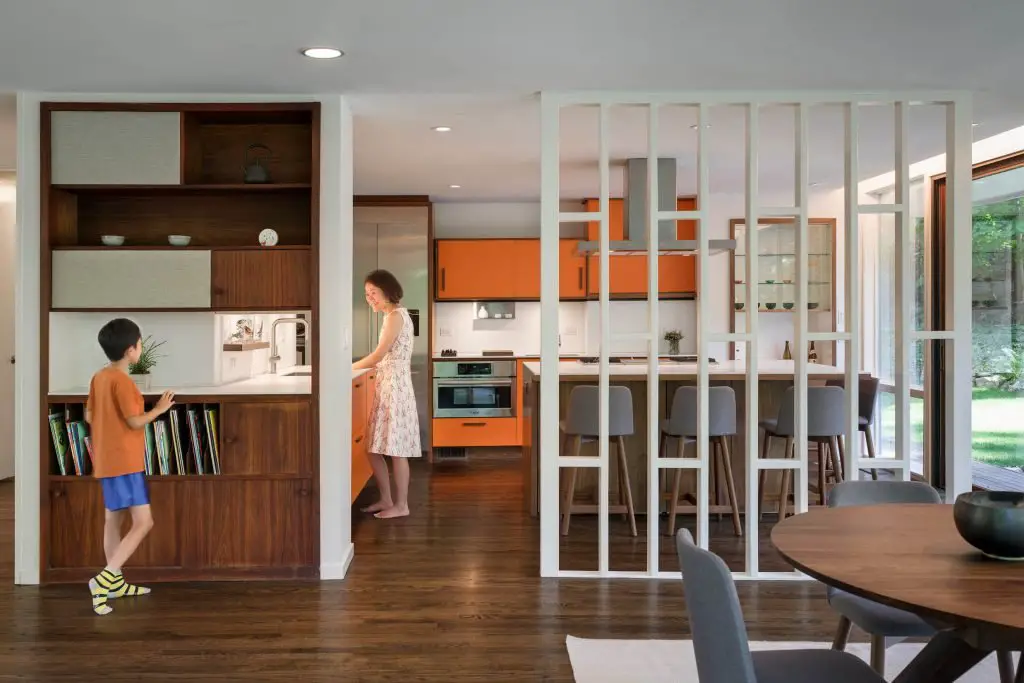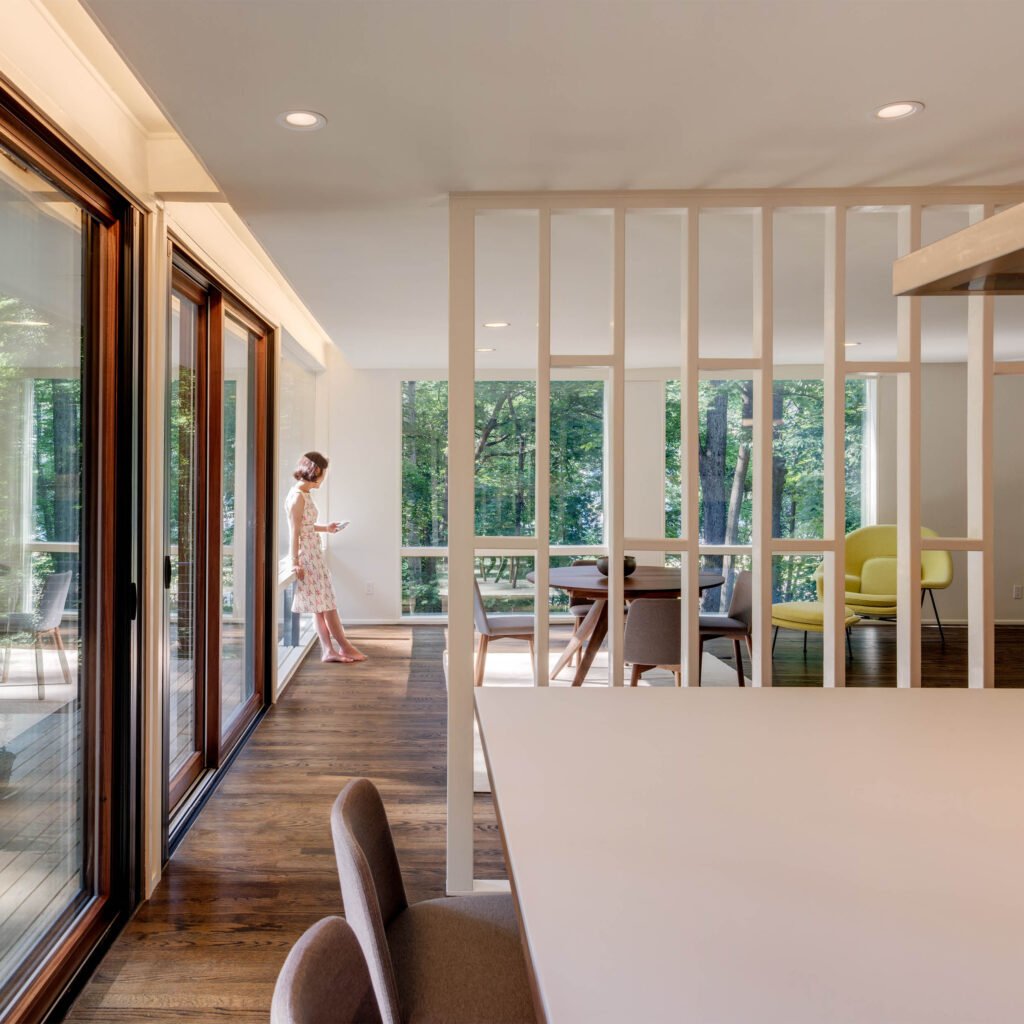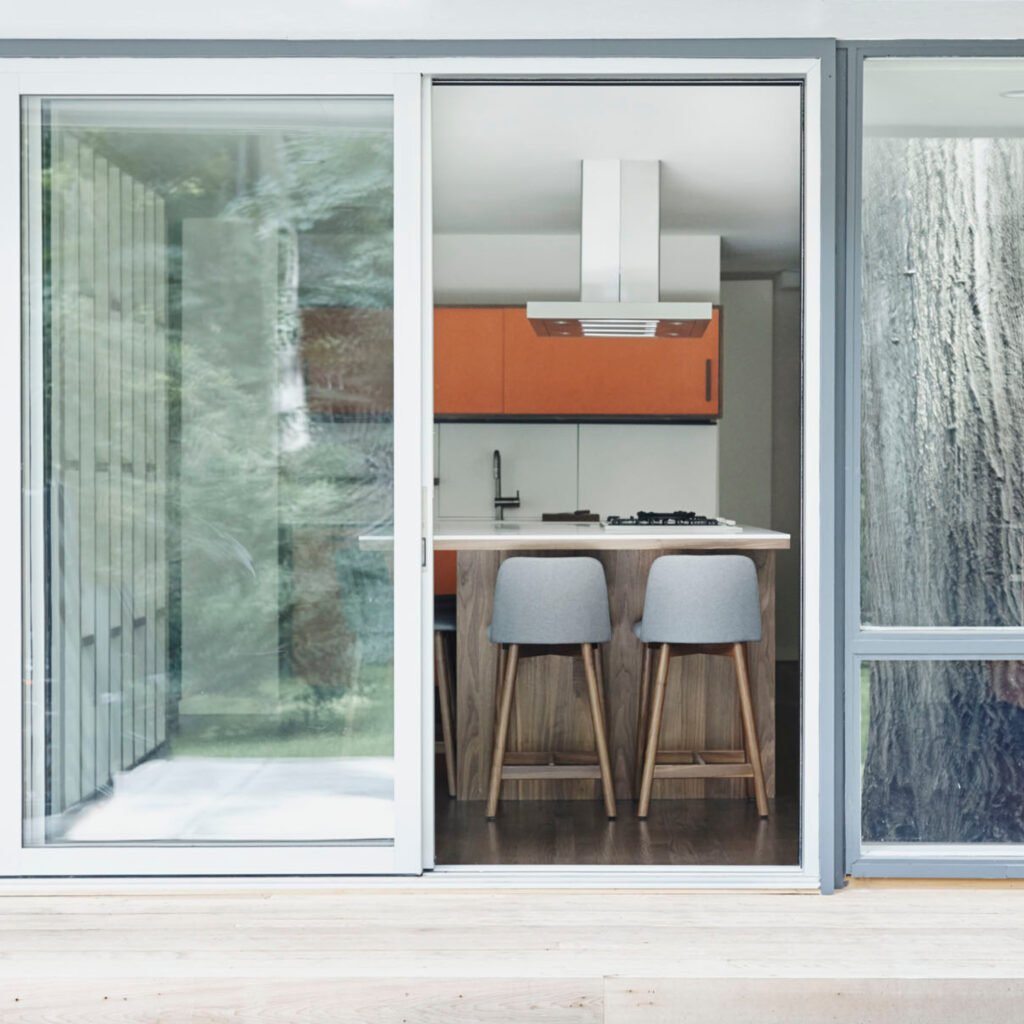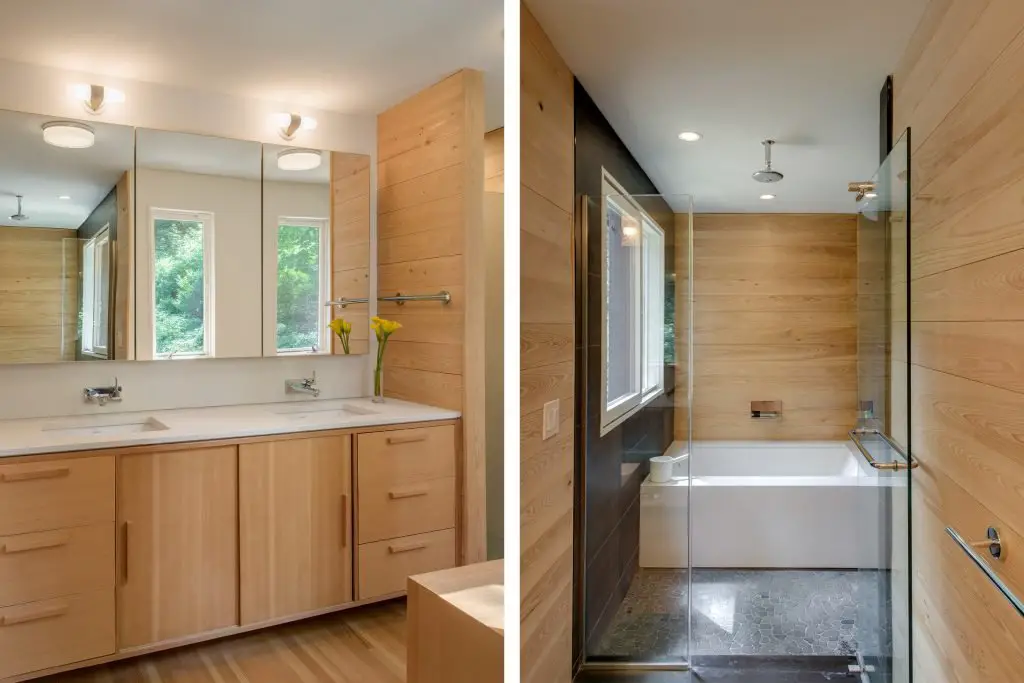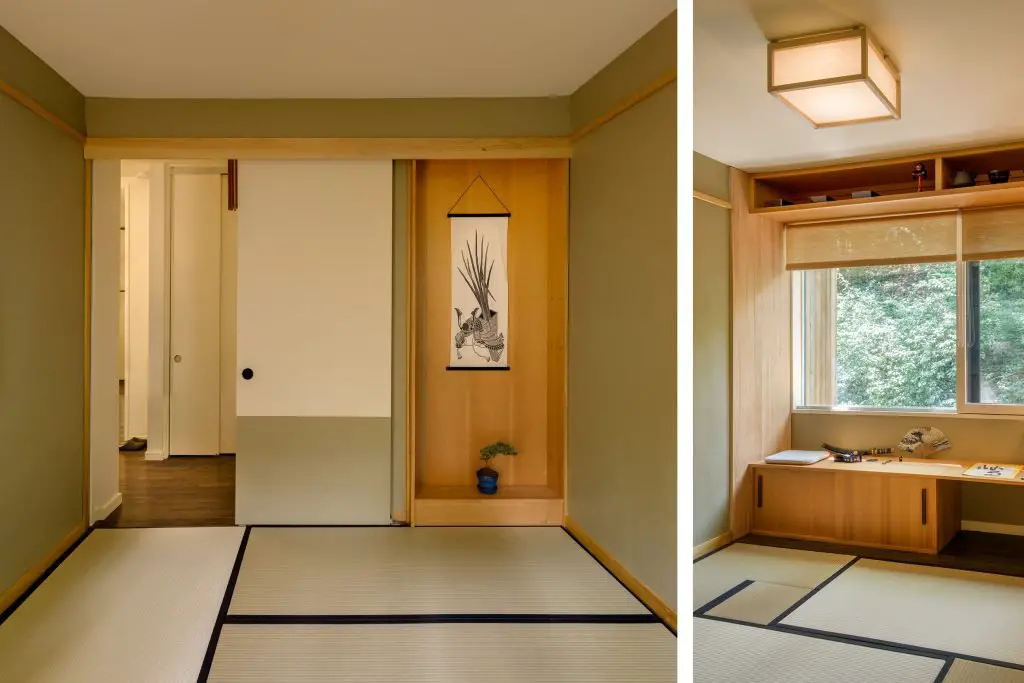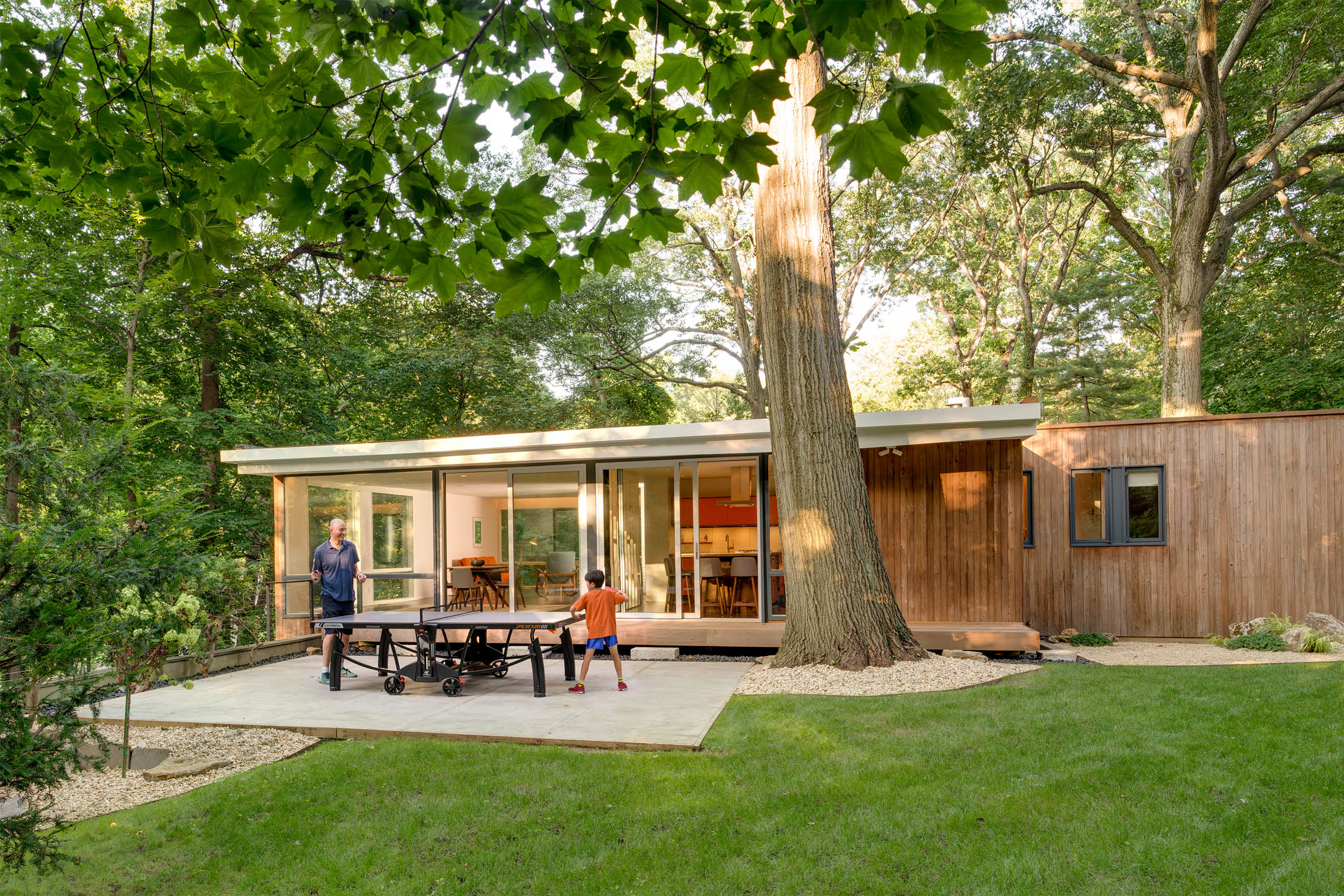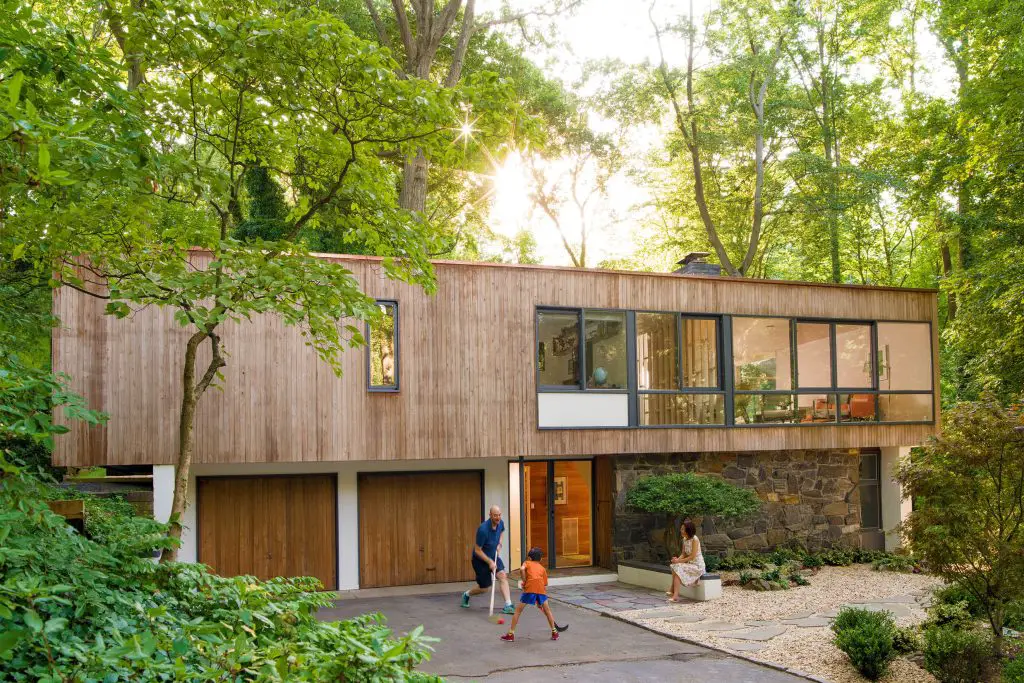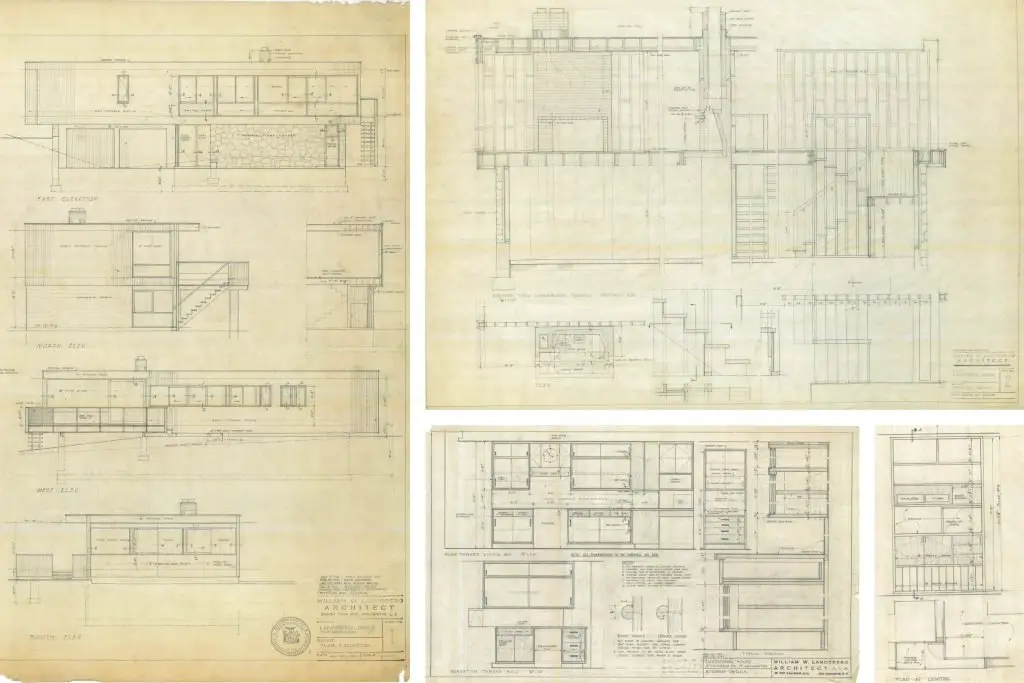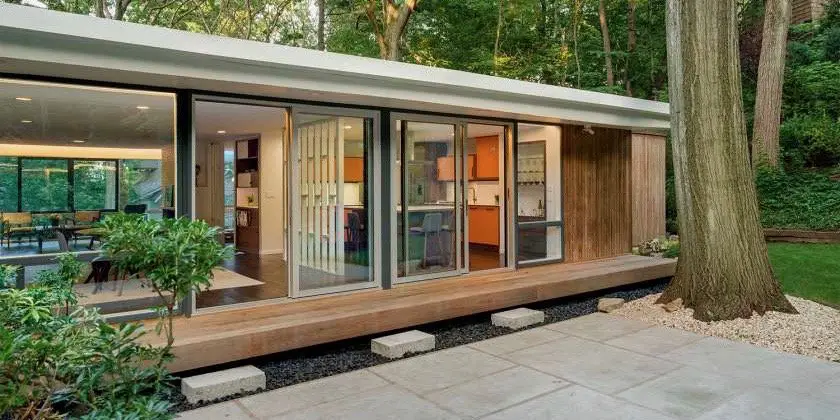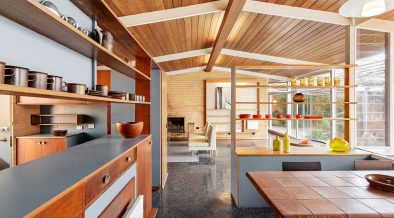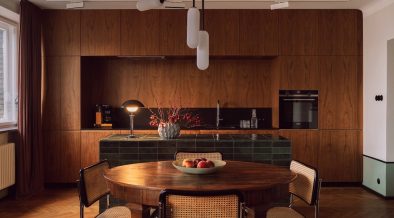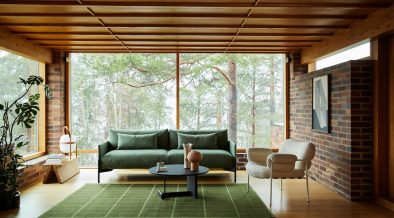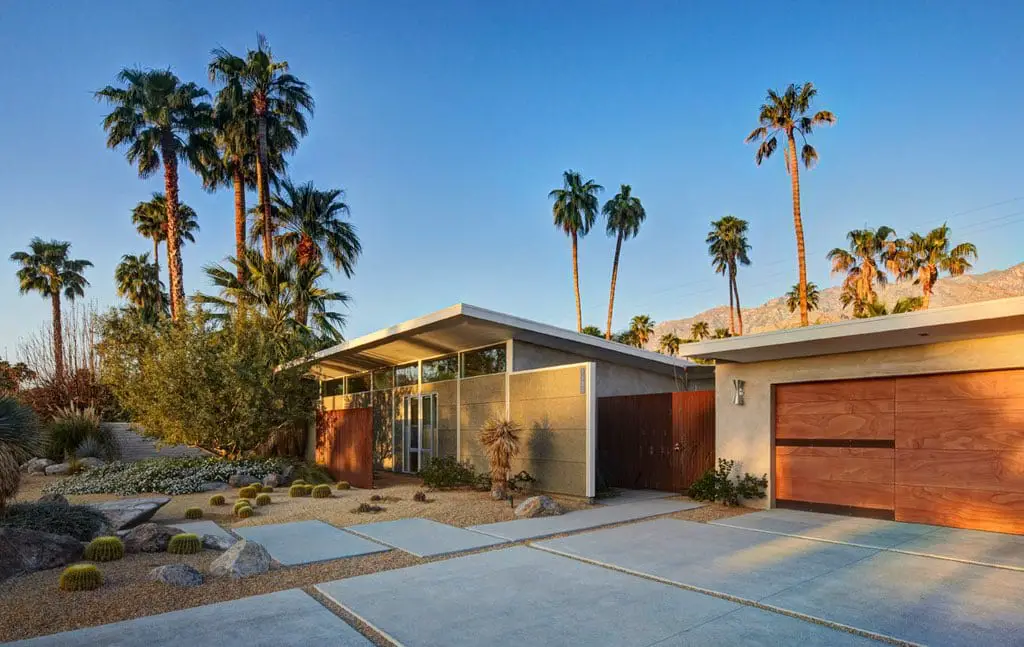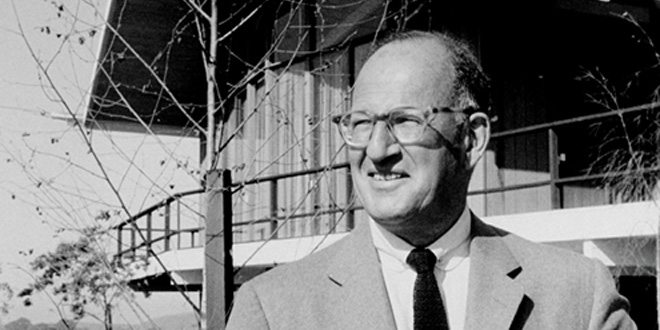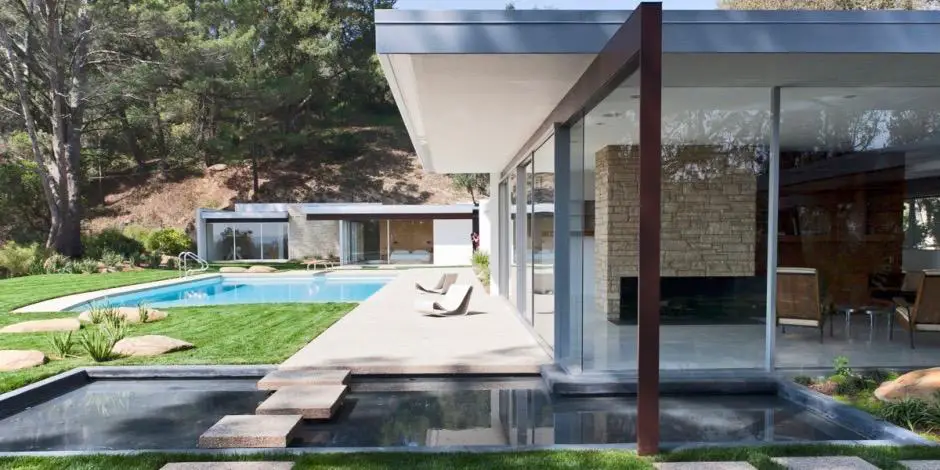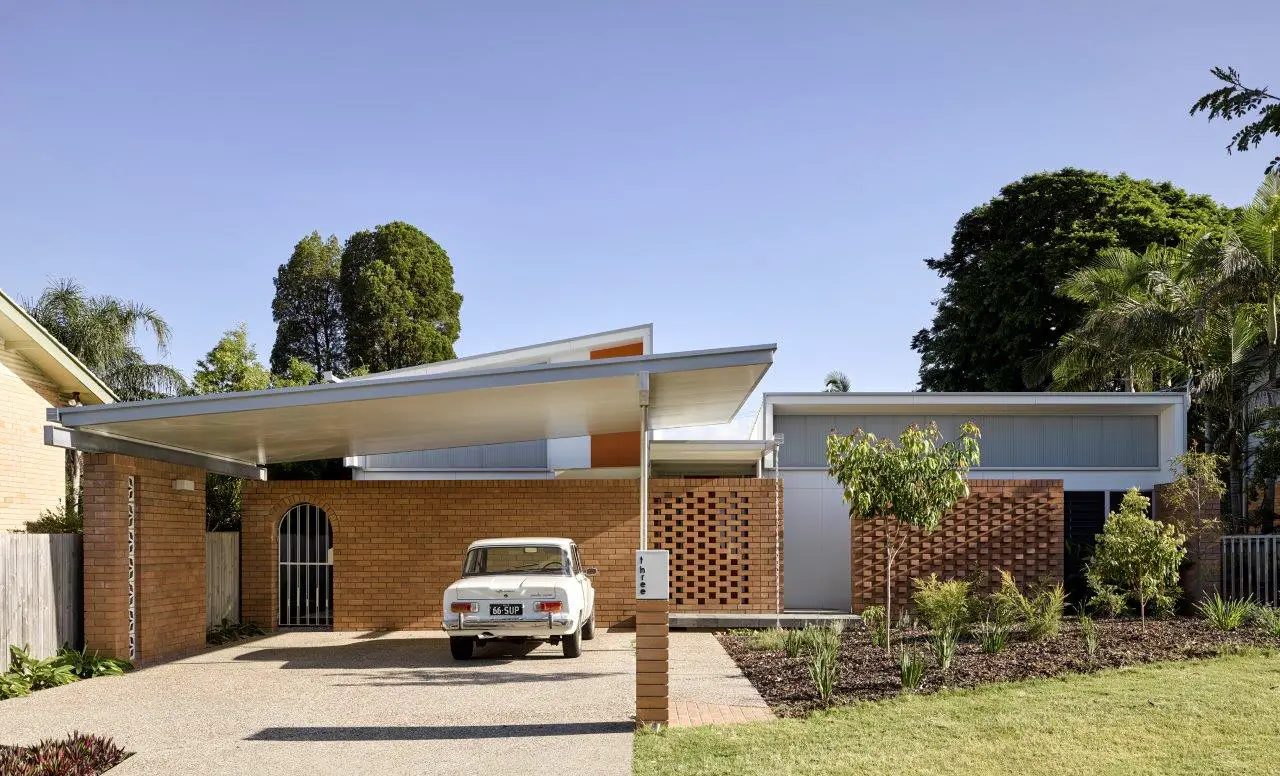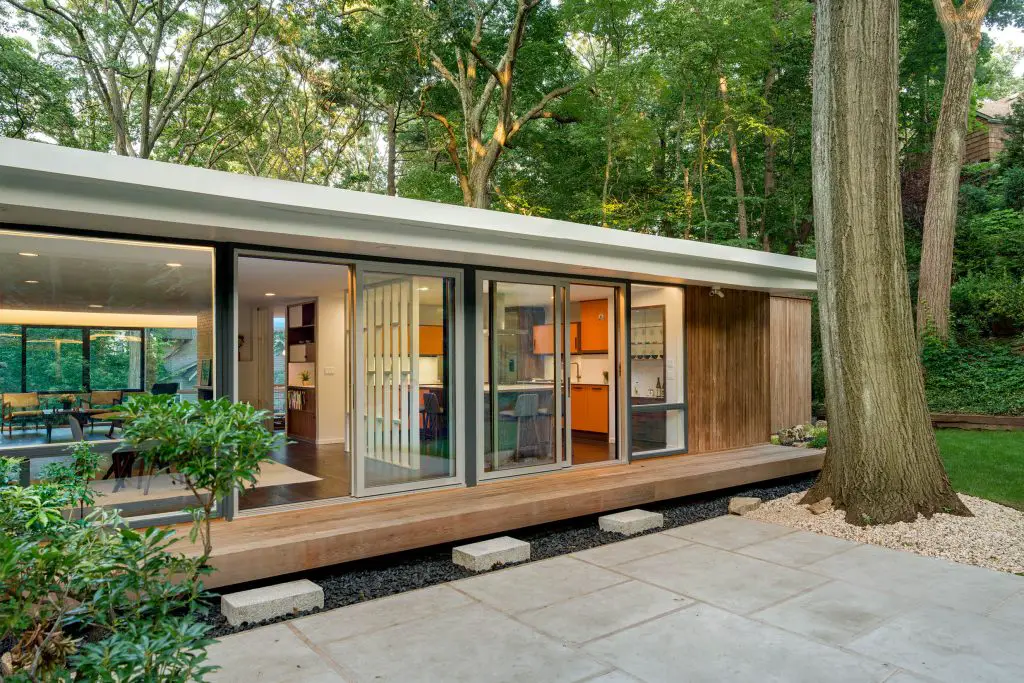
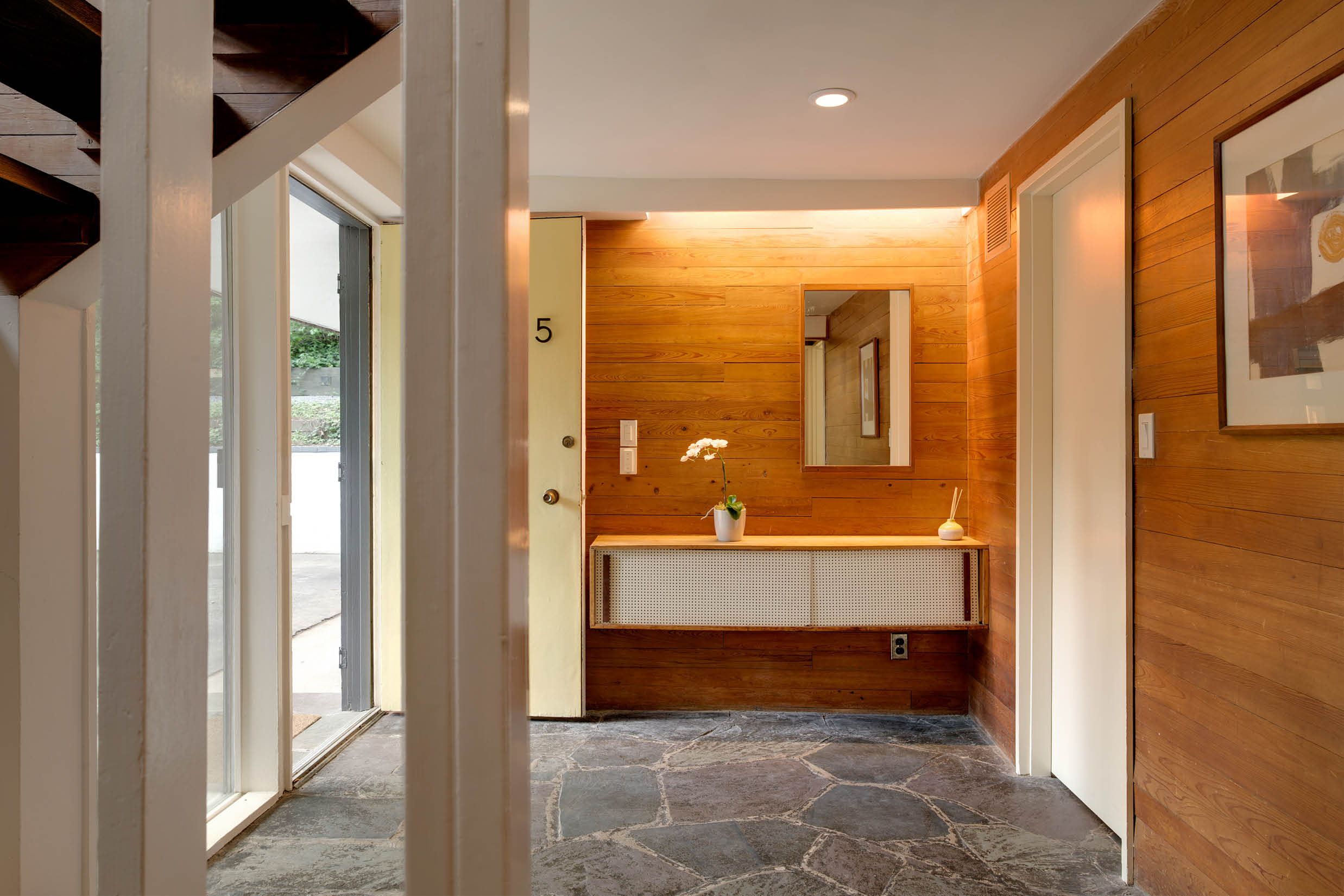
This Mid-century modern home designed by William Landsberg was beautifully renovated by SMA | Stephen Moser Architects for a contemporary Japanese lifestyle.
Landsberg, built this house in Port Washington, Long Island, for himself and his family, gaining regional fame for his modernist designs.
When the mid-century house transitioned to its new Japanese-American owners, SMA was brought in to oversee a sensitive renovation of the house, which had remained largely unchanged during Landsberg’s residence. The renovation introduced Japanese elements to certain areas of the design, reflecting the family’s decade-long experience living in Japan.
The 1951 house, listed on the National Register of Historic Places, exemplifies the Bauhaus-inspired design principles Landsberg learned at Harvard University under the guidance of Marcel Breuer.
The new owners, along with SMA, approached the design process with deep respect and admiration for the house’s original modernist style and hillside setting. However, they also wanted to update the home to suit their contemporary needs and make it comfortable for a young family accustomed to living in a Japanese home.
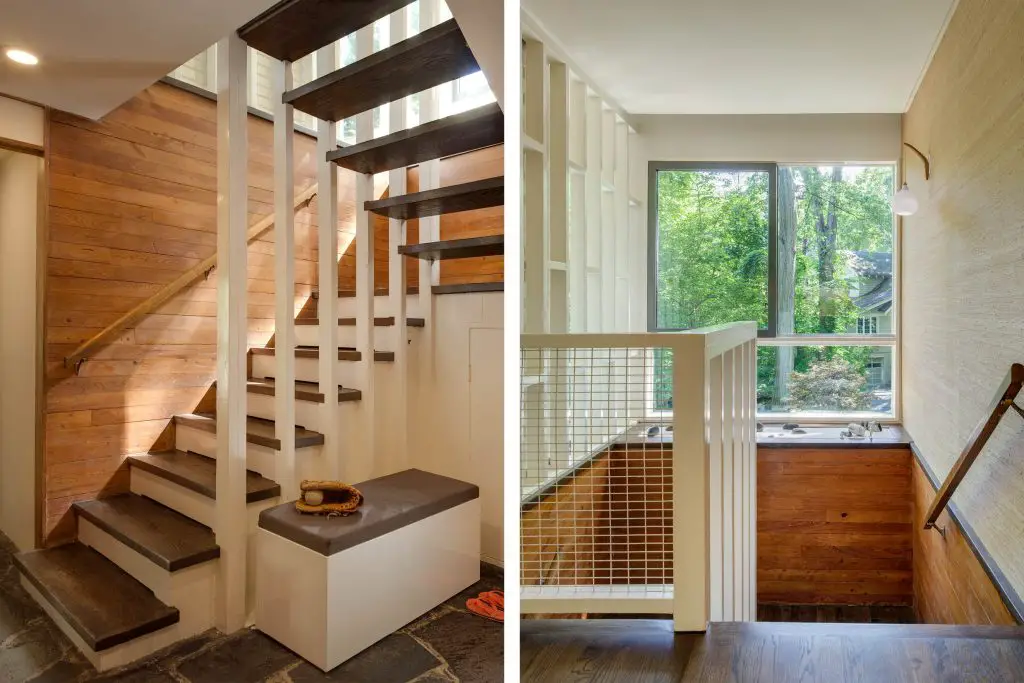

The “floating” rectangular-box structure and simple lines of the house perfectly matched the clients’ design sensibilities and wish list. They envisioned a teppanyaki-cooking island in a kitchen that opened to the living room, a narrow engawa-like deck along the back of the house, a primary bathroom with a deep ofuro-type soaking tub, a tatami guest room, and a patio large enough to play ping pong.
SMA collaborated closely with Henrybuilt to create a contemporary kitchen that pays homage to its mid-century roots, featuring papaya-colored laminates, walnut paneling, and custom pulls.
The color palette throughout the house is remarkably consistent, with dark brown wood stained in a polish that runs throughout, covering the floors, cabinetry panels, and even the kitchen cupboard handles.
The orange in the kitchen disrupts the muted quality of the overall palette, which otherwise comprises dark brown and white, creating a striking yet harmonious balance.
The clean white surfaces that dominate much of the home’s interior contribute to a modern minimalist aesthetic, which complements the mid-century modern design without overshadowing it.
The renovation’s thoughtful approach is also evident in the way contemporary design elements are subtly introduced, enhancing the home’s functionality while maintaining its historical integrity.
